BMP3005: Detailed Report on Money Planning and Financial Statements
VerifiedAdded on 2023/06/15
|14
|2314
|179
Report
AI Summary
This report provides an overview of corporate funding and financial management, emphasizing the importance of money planning within organizations. It delves into the benefits of financial management, including achieving operational valuations, wealth administration, and ensuring rational fund distribution. The document describes key financial statements such as the balance sheet, profit and loss assertion, and statement of working capital, explaining their components and significance in evaluating a company's financial health. Furthermore, it discusses the use of financial ratios for assessing a firm's financial condition, production performance, and revenue growth. The analysis highlights the importance of efficient cash flow management and identifies areas for improvement in profitability and expense management. In conclusion, the report underscores the role of financial planning in evaluating a firm's effectiveness, ensuring compliance with policies, and facilitating informed decision-making.

Bmp3005
Paraphrase This Document
Need a fresh take? Get an instant paraphrase of this document with our AI Paraphraser
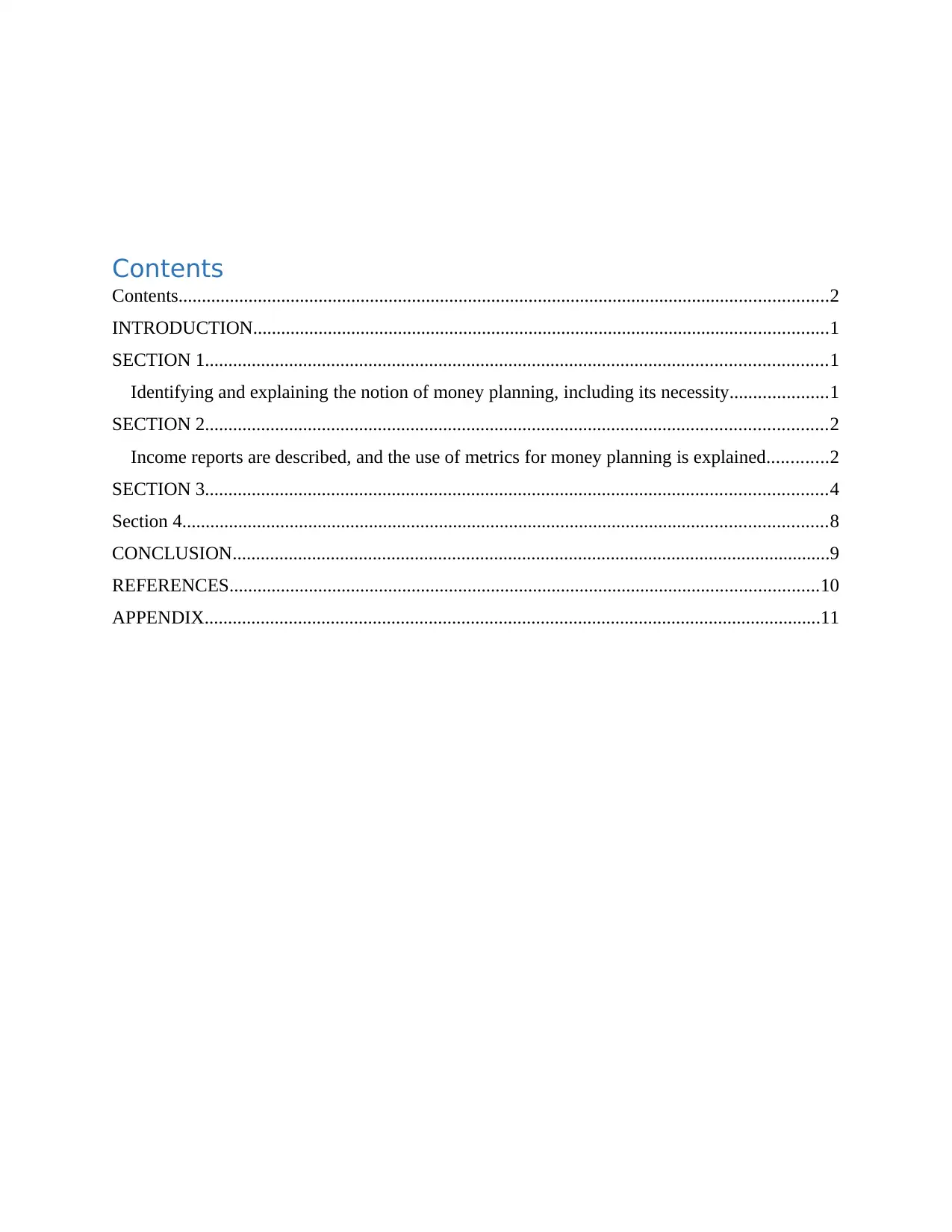
Contents
Contents...........................................................................................................................................2
INTRODUCTION...........................................................................................................................1
SECTION 1.....................................................................................................................................1
Identifying and explaining the notion of money planning, including its necessity.....................1
SECTION 2.....................................................................................................................................2
Income reports are described, and the use of metrics for money planning is explained.............2
SECTION 3.....................................................................................................................................4
Section 4..........................................................................................................................................8
CONCLUSION................................................................................................................................9
REFERENCES..............................................................................................................................10
APPENDIX....................................................................................................................................11
Contents...........................................................................................................................................2
INTRODUCTION...........................................................................................................................1
SECTION 1.....................................................................................................................................1
Identifying and explaining the notion of money planning, including its necessity.....................1
SECTION 2.....................................................................................................................................2
Income reports are described, and the use of metrics for money planning is explained.............2
SECTION 3.....................................................................................................................................4
Section 4..........................................................................................................................................8
CONCLUSION................................................................................................................................9
REFERENCES..............................................................................................................................10
APPENDIX....................................................................................................................................11

⊘ This is a preview!⊘
Do you want full access?
Subscribe today to unlock all pages.

Trusted by 1+ million students worldwide
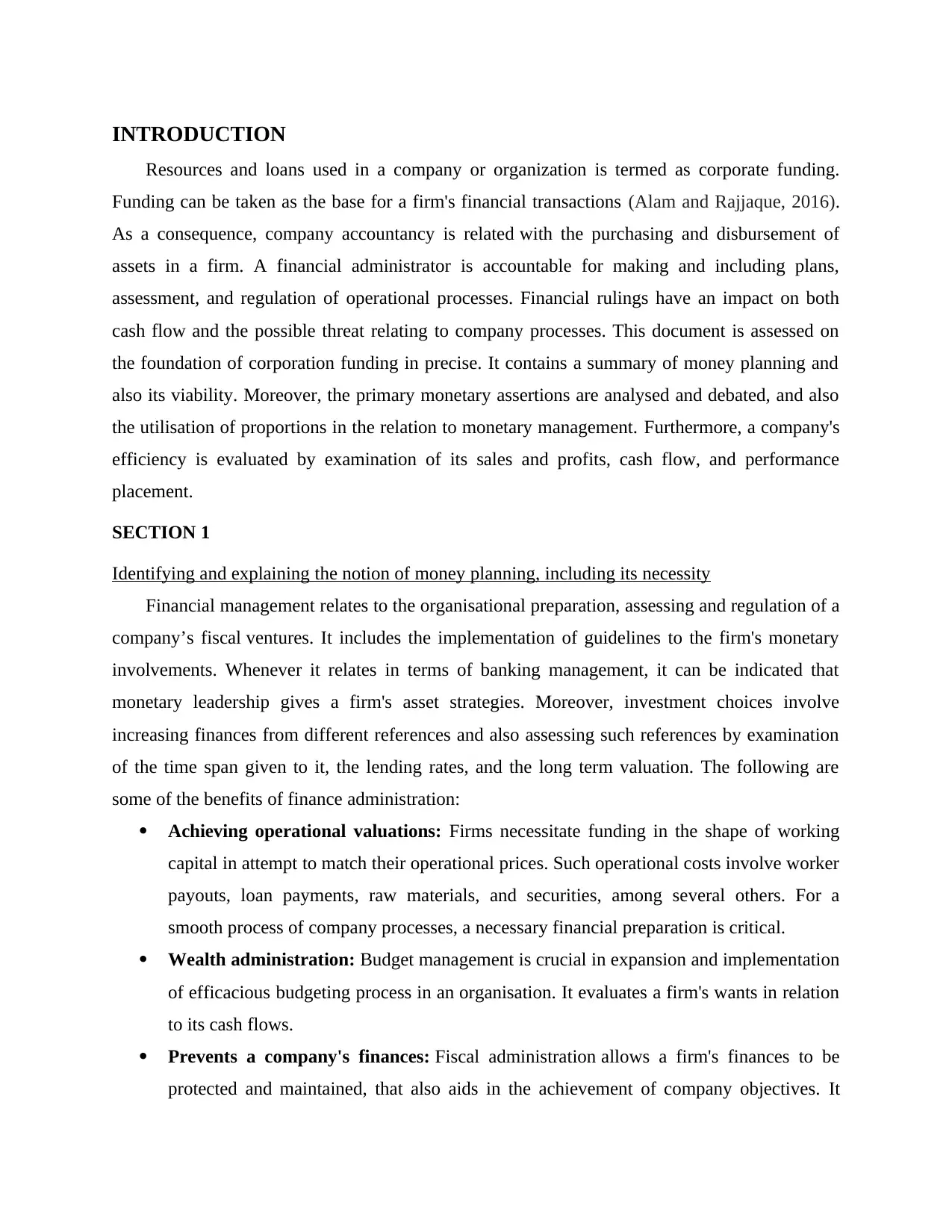
INTRODUCTION
Resources and loans used in a company or organization is termed as corporate funding.
Funding can be taken as the base for a firm's financial transactions (Alam and Rajjaque, 2016).
As a consequence, company accountancy is related with the purchasing and disbursement of
assets in a firm. A financial administrator is accountable for making and including plans,
assessment, and regulation of operational processes. Financial rulings have an impact on both
cash flow and the possible threat relating to company processes. This document is assessed on
the foundation of corporation funding in precise. It contains a summary of money planning and
also its viability. Moreover, the primary monetary assertions are analysed and debated, and also
the utilisation of proportions in the relation to monetary management. Furthermore, a company's
efficiency is evaluated by examination of its sales and profits, cash flow, and performance
placement.
SECTION 1
Identifying and explaining the notion of money planning, including its necessity
Financial management relates to the organisational preparation, assessing and regulation of a
company’s fiscal ventures. It includes the implementation of guidelines to the firm's monetary
involvements. Whenever it relates in terms of banking management, it can be indicated that
monetary leadership gives a firm's asset strategies. Moreover, investment choices involve
increasing finances from different references and also assessing such references by examination
of the time span given to it, the lending rates, and the long term valuation. The following are
some of the benefits of finance administration:
Achieving operational valuations: Firms necessitate funding in the shape of working
capital in attempt to match their operational prices. Such operational costs involve worker
payouts, loan payments, raw materials, and securities, among several others. For a
smooth process of company processes, a necessary financial preparation is critical.
Wealth administration: Budget management is crucial in expansion and implementation
of efficacious budgeting process in an organisation. It evaluates a firm's wants in relation
to its cash flows.
Prevents a company's finances: Fiscal administration allows a firm's finances to be
protected and maintained, that also aids in the achievement of company objectives. It
Resources and loans used in a company or organization is termed as corporate funding.
Funding can be taken as the base for a firm's financial transactions (Alam and Rajjaque, 2016).
As a consequence, company accountancy is related with the purchasing and disbursement of
assets in a firm. A financial administrator is accountable for making and including plans,
assessment, and regulation of operational processes. Financial rulings have an impact on both
cash flow and the possible threat relating to company processes. This document is assessed on
the foundation of corporation funding in precise. It contains a summary of money planning and
also its viability. Moreover, the primary monetary assertions are analysed and debated, and also
the utilisation of proportions in the relation to monetary management. Furthermore, a company's
efficiency is evaluated by examination of its sales and profits, cash flow, and performance
placement.
SECTION 1
Identifying and explaining the notion of money planning, including its necessity
Financial management relates to the organisational preparation, assessing and regulation of a
company’s fiscal ventures. It includes the implementation of guidelines to the firm's monetary
involvements. Whenever it relates in terms of banking management, it can be indicated that
monetary leadership gives a firm's asset strategies. Moreover, investment choices involve
increasing finances from different references and also assessing such references by examination
of the time span given to it, the lending rates, and the long term valuation. The following are
some of the benefits of finance administration:
Achieving operational valuations: Firms necessitate funding in the shape of working
capital in attempt to match their operational prices. Such operational costs involve worker
payouts, loan payments, raw materials, and securities, among several others. For a
smooth process of company processes, a necessary financial preparation is critical.
Wealth administration: Budget management is crucial in expansion and implementation
of efficacious budgeting process in an organisation. It evaluates a firm's wants in relation
to its cash flows.
Prevents a company's finances: Fiscal administration allows a firm's finances to be
protected and maintained, that also aids in the achievement of company objectives. It
Paraphrase This Document
Need a fresh take? Get an instant paraphrase of this document with our AI Paraphraser
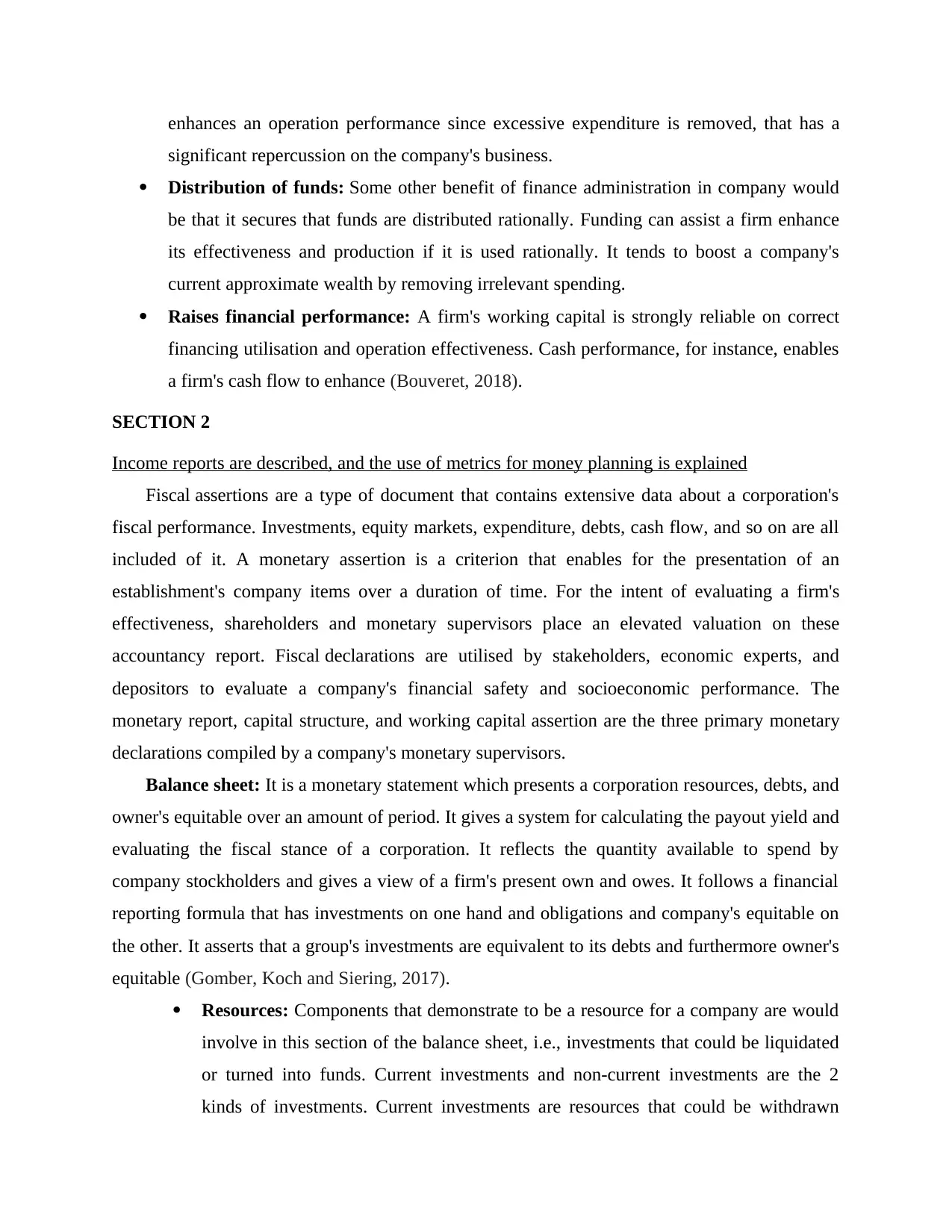
enhances an operation performance since excessive expenditure is removed, that has a
significant repercussion on the company's business.
Distribution of funds: Some other benefit of finance administration in company would
be that it secures that funds are distributed rationally. Funding can assist a firm enhance
its effectiveness and production if it is used rationally. It tends to boost a company's
current approximate wealth by removing irrelevant spending.
Raises financial performance: A firm's working capital is strongly reliable on correct
financing utilisation and operation effectiveness. Cash performance, for instance, enables
a firm's cash flow to enhance (Bouveret, 2018).
SECTION 2
Income reports are described, and the use of metrics for money planning is explained
Fiscal assertions are a type of document that contains extensive data about a corporation's
fiscal performance. Investments, equity markets, expenditure, debts, cash flow, and so on are all
included of it. A monetary assertion is a criterion that enables for the presentation of an
establishment's company items over a duration of time. For the intent of evaluating a firm's
effectiveness, shareholders and monetary supervisors place an elevated valuation on these
accountancy report. Fiscal declarations are utilised by stakeholders, economic experts, and
depositors to evaluate a company's financial safety and socioeconomic performance. The
monetary report, capital structure, and working capital assertion are the three primary monetary
declarations compiled by a company's monetary supervisors.
Balance sheet: It is a monetary statement which presents a corporation resources, debts, and
owner's equitable over an amount of period. It gives a system for calculating the payout yield and
evaluating the fiscal stance of a corporation. It reflects the quantity available to spend by
company stockholders and gives a view of a firm's present own and owes. It follows a financial
reporting formula that has investments on one hand and obligations and company's equitable on
the other. It asserts that a group's investments are equivalent to its debts and furthermore owner's
equitable (Gomber, Koch and Siering, 2017).
Resources: Components that demonstrate to be a resource for a company are would
involve in this section of the balance sheet, i.e., investments that could be liquidated
or turned into funds. Current investments and non-current investments are the 2
kinds of investments. Current investments are resources that could be withdrawn
significant repercussion on the company's business.
Distribution of funds: Some other benefit of finance administration in company would
be that it secures that funds are distributed rationally. Funding can assist a firm enhance
its effectiveness and production if it is used rationally. It tends to boost a company's
current approximate wealth by removing irrelevant spending.
Raises financial performance: A firm's working capital is strongly reliable on correct
financing utilisation and operation effectiveness. Cash performance, for instance, enables
a firm's cash flow to enhance (Bouveret, 2018).
SECTION 2
Income reports are described, and the use of metrics for money planning is explained
Fiscal assertions are a type of document that contains extensive data about a corporation's
fiscal performance. Investments, equity markets, expenditure, debts, cash flow, and so on are all
included of it. A monetary assertion is a criterion that enables for the presentation of an
establishment's company items over a duration of time. For the intent of evaluating a firm's
effectiveness, shareholders and monetary supervisors place an elevated valuation on these
accountancy report. Fiscal declarations are utilised by stakeholders, economic experts, and
depositors to evaluate a company's financial safety and socioeconomic performance. The
monetary report, capital structure, and working capital assertion are the three primary monetary
declarations compiled by a company's monetary supervisors.
Balance sheet: It is a monetary statement which presents a corporation resources, debts, and
owner's equitable over an amount of period. It gives a system for calculating the payout yield and
evaluating the fiscal stance of a corporation. It reflects the quantity available to spend by
company stockholders and gives a view of a firm's present own and owes. It follows a financial
reporting formula that has investments on one hand and obligations and company's equitable on
the other. It asserts that a group's investments are equivalent to its debts and furthermore owner's
equitable (Gomber, Koch and Siering, 2017).
Resources: Components that demonstrate to be a resource for a company are would
involve in this section of the balance sheet, i.e., investments that could be liquidated
or turned into funds. Current investments and non-current investments are the 2
kinds of investments. Current investments are resources that could be withdrawn
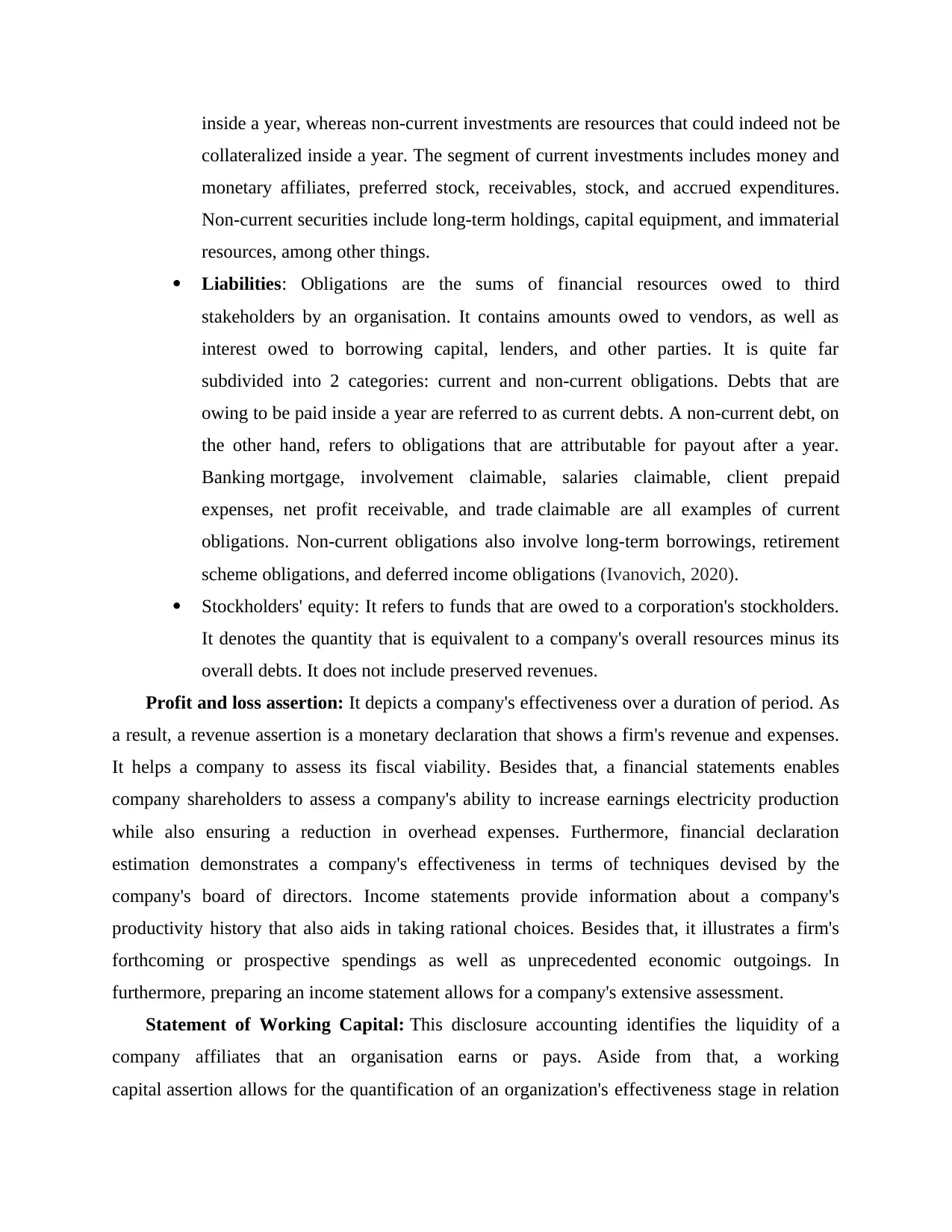
inside a year, whereas non-current investments are resources that could indeed not be
collateralized inside a year. The segment of current investments includes money and
monetary affiliates, preferred stock, receivables, stock, and accrued expenditures.
Non-current securities include long-term holdings, capital equipment, and immaterial
resources, among other things.
Liabilities: Obligations are the sums of financial resources owed to third
stakeholders by an organisation. It contains amounts owed to vendors, as well as
interest owed to borrowing capital, lenders, and other parties. It is quite far
subdivided into 2 categories: current and non-current obligations. Debts that are
owing to be paid inside a year are referred to as current debts. A non-current debt, on
the other hand, refers to obligations that are attributable for payout after a year.
Banking mortgage, involvement claimable, salaries claimable, client prepaid
expenses, net profit receivable, and trade claimable are all examples of current
obligations. Non-current obligations also involve long-term borrowings, retirement
scheme obligations, and deferred income obligations (Ivanovich, 2020).
Stockholders' equity: It refers to funds that are owed to a corporation's stockholders.
It denotes the quantity that is equivalent to a company's overall resources minus its
overall debts. It does not include preserved revenues.
Profit and loss assertion: It depicts a company's effectiveness over a duration of period. As
a result, a revenue assertion is a monetary declaration that shows a firm's revenue and expenses.
It helps a company to assess its fiscal viability. Besides that, a financial statements enables
company shareholders to assess a company's ability to increase earnings electricity production
while also ensuring a reduction in overhead expenses. Furthermore, financial declaration
estimation demonstrates a company's effectiveness in terms of techniques devised by the
company's board of directors. Income statements provide information about a company's
productivity history that also aids in taking rational choices. Besides that, it illustrates a firm's
forthcoming or prospective spendings as well as unprecedented economic outgoings. In
furthermore, preparing an income statement allows for a company's extensive assessment.
Statement of Working Capital: This disclosure accounting identifies the liquidity of a
company affiliates that an organisation earns or pays. Aside from that, a working
capital assertion allows for the quantification of an organization's effectiveness stage in relation
collateralized inside a year. The segment of current investments includes money and
monetary affiliates, preferred stock, receivables, stock, and accrued expenditures.
Non-current securities include long-term holdings, capital equipment, and immaterial
resources, among other things.
Liabilities: Obligations are the sums of financial resources owed to third
stakeholders by an organisation. It contains amounts owed to vendors, as well as
interest owed to borrowing capital, lenders, and other parties. It is quite far
subdivided into 2 categories: current and non-current obligations. Debts that are
owing to be paid inside a year are referred to as current debts. A non-current debt, on
the other hand, refers to obligations that are attributable for payout after a year.
Banking mortgage, involvement claimable, salaries claimable, client prepaid
expenses, net profit receivable, and trade claimable are all examples of current
obligations. Non-current obligations also involve long-term borrowings, retirement
scheme obligations, and deferred income obligations (Ivanovich, 2020).
Stockholders' equity: It refers to funds that are owed to a corporation's stockholders.
It denotes the quantity that is equivalent to a company's overall resources minus its
overall debts. It does not include preserved revenues.
Profit and loss assertion: It depicts a company's effectiveness over a duration of period. As
a result, a revenue assertion is a monetary declaration that shows a firm's revenue and expenses.
It helps a company to assess its fiscal viability. Besides that, a financial statements enables
company shareholders to assess a company's ability to increase earnings electricity production
while also ensuring a reduction in overhead expenses. Furthermore, financial declaration
estimation demonstrates a company's effectiveness in terms of techniques devised by the
company's board of directors. Income statements provide information about a company's
productivity history that also aids in taking rational choices. Besides that, it illustrates a firm's
forthcoming or prospective spendings as well as unprecedented economic outgoings. In
furthermore, preparing an income statement allows for a company's extensive assessment.
Statement of Working Capital: This disclosure accounting identifies the liquidity of a
company affiliates that an organisation earns or pays. Aside from that, a working
capital assertion allows for the quantification of an organization's effectiveness stage in relation
⊘ This is a preview!⊘
Do you want full access?
Subscribe today to unlock all pages.

Trusted by 1+ million students worldwide
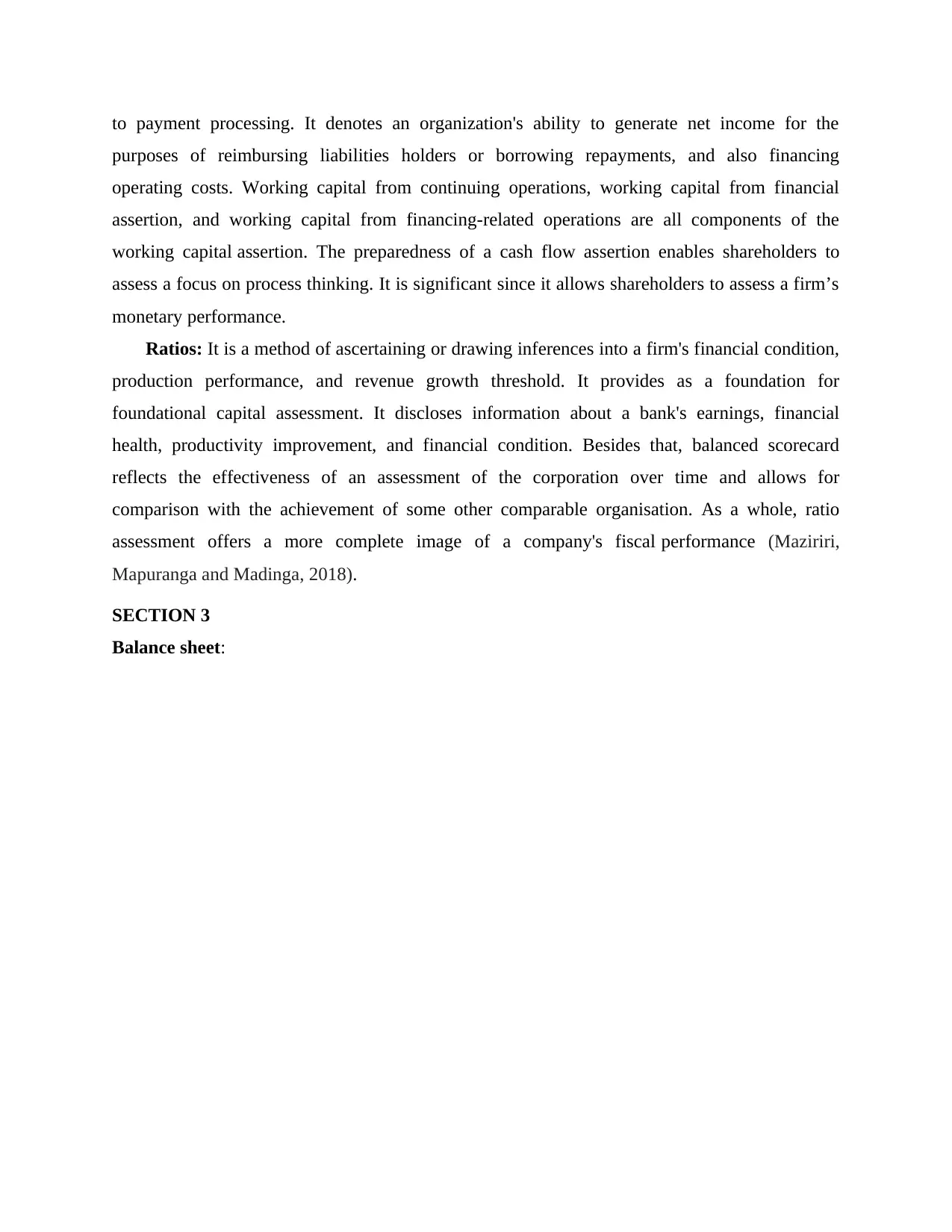
to payment processing. It denotes an organization's ability to generate net income for the
purposes of reimbursing liabilities holders or borrowing repayments, and also financing
operating costs. Working capital from continuing operations, working capital from financial
assertion, and working capital from financing-related operations are all components of the
working capital assertion. The preparedness of a cash flow assertion enables shareholders to
assess a focus on process thinking. It is significant since it allows shareholders to assess a firm’s
monetary performance.
Ratios: It is a method of ascertaining or drawing inferences into a firm's financial condition,
production performance, and revenue growth threshold. It provides as a foundation for
foundational capital assessment. It discloses information about a bank's earnings, financial
health, productivity improvement, and financial condition. Besides that, balanced scorecard
reflects the effectiveness of an assessment of the corporation over time and allows for
comparison with the achievement of some other comparable organisation. As a whole, ratio
assessment offers a more complete image of a company's fiscal performance (Maziriri,
Mapuranga and Madinga, 2018).
SECTION 3
Balance sheet:
purposes of reimbursing liabilities holders or borrowing repayments, and also financing
operating costs. Working capital from continuing operations, working capital from financial
assertion, and working capital from financing-related operations are all components of the
working capital assertion. The preparedness of a cash flow assertion enables shareholders to
assess a focus on process thinking. It is significant since it allows shareholders to assess a firm’s
monetary performance.
Ratios: It is a method of ascertaining or drawing inferences into a firm's financial condition,
production performance, and revenue growth threshold. It provides as a foundation for
foundational capital assessment. It discloses information about a bank's earnings, financial
health, productivity improvement, and financial condition. Besides that, balanced scorecard
reflects the effectiveness of an assessment of the corporation over time and allows for
comparison with the achievement of some other comparable organisation. As a whole, ratio
assessment offers a more complete image of a company's fiscal performance (Maziriri,
Mapuranga and Madinga, 2018).
SECTION 3
Balance sheet:
Paraphrase This Document
Need a fresh take? Get an instant paraphrase of this document with our AI Paraphraser
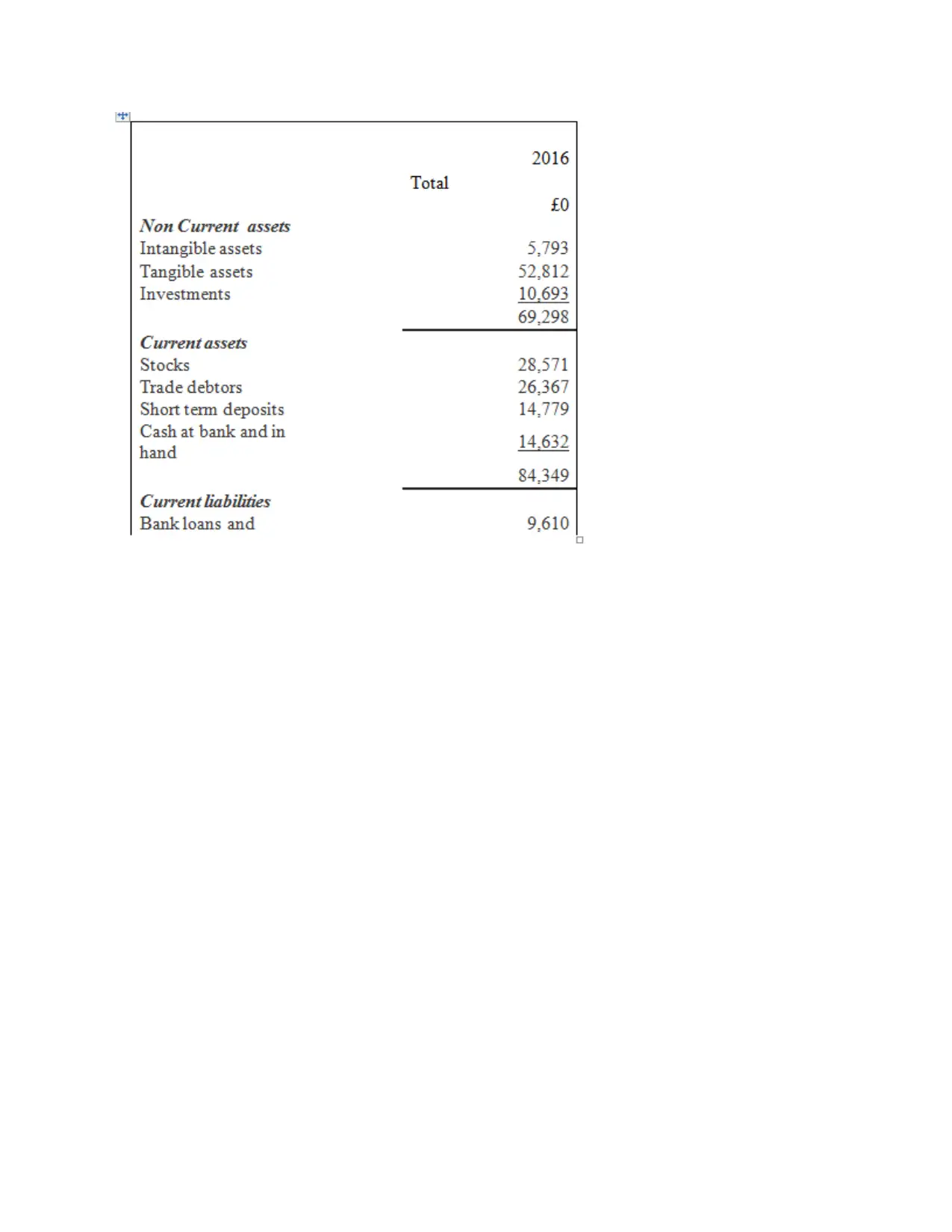
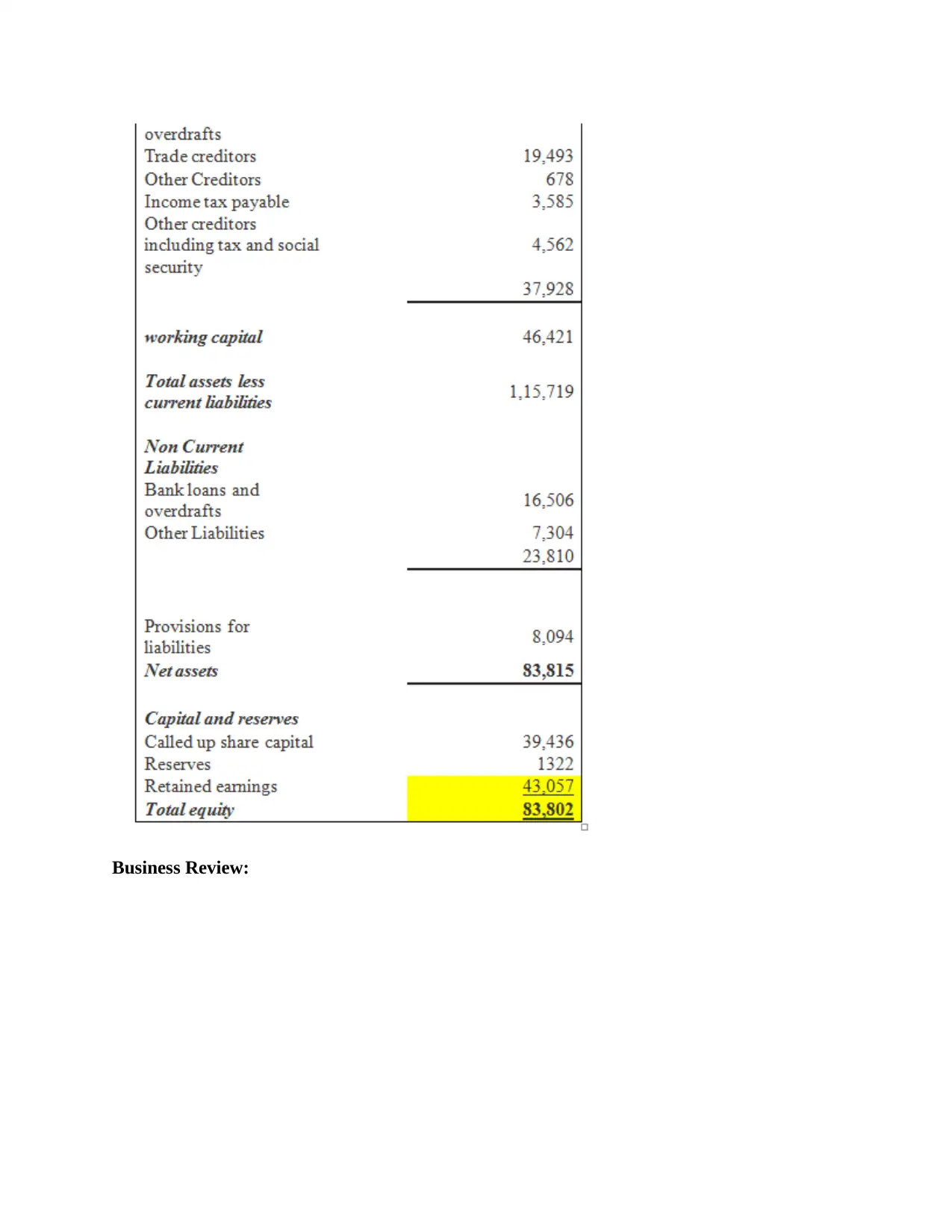
Business Review:
⊘ This is a preview!⊘
Do you want full access?
Subscribe today to unlock all pages.

Trusted by 1+ million students worldwide
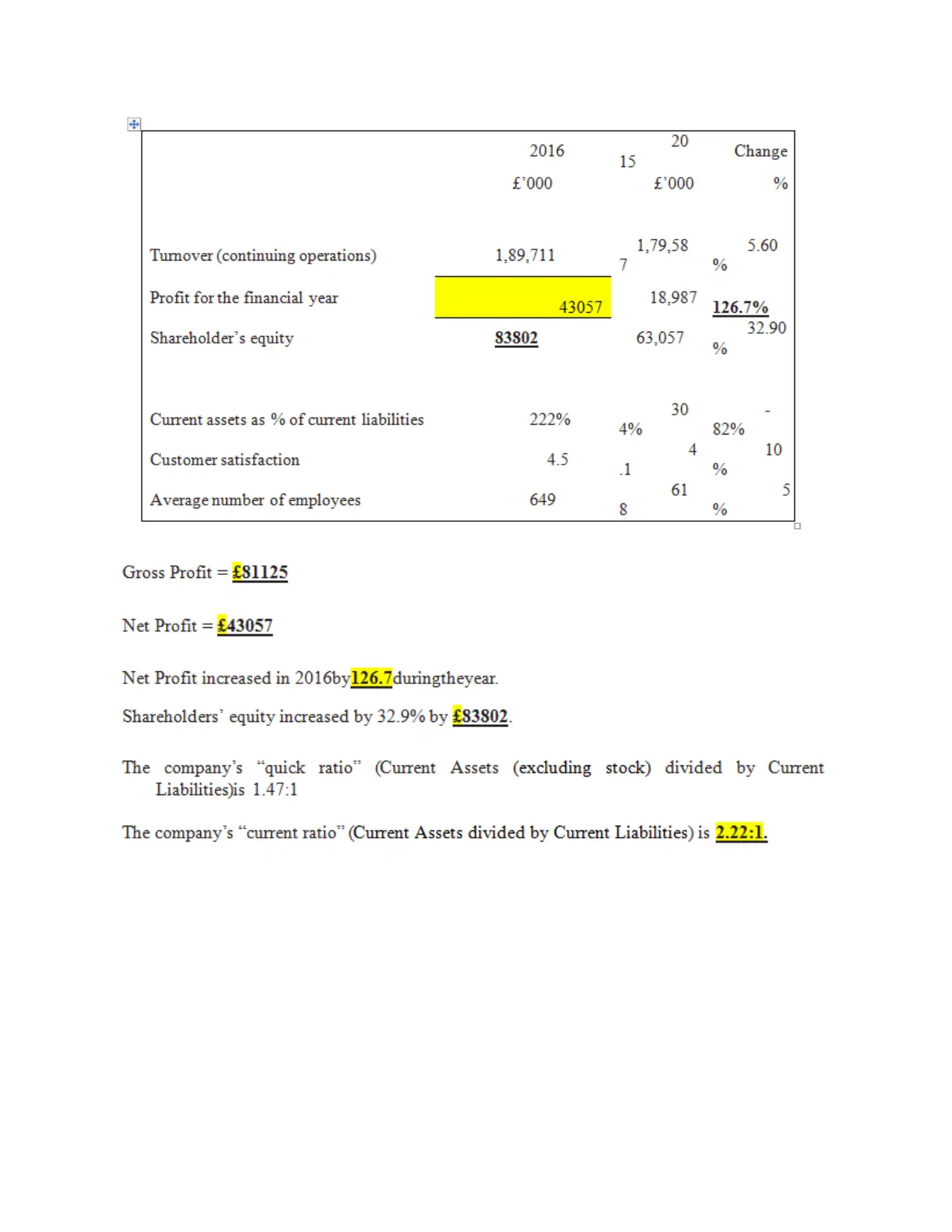
Paraphrase This Document
Need a fresh take? Get an instant paraphrase of this document with our AI Paraphraser
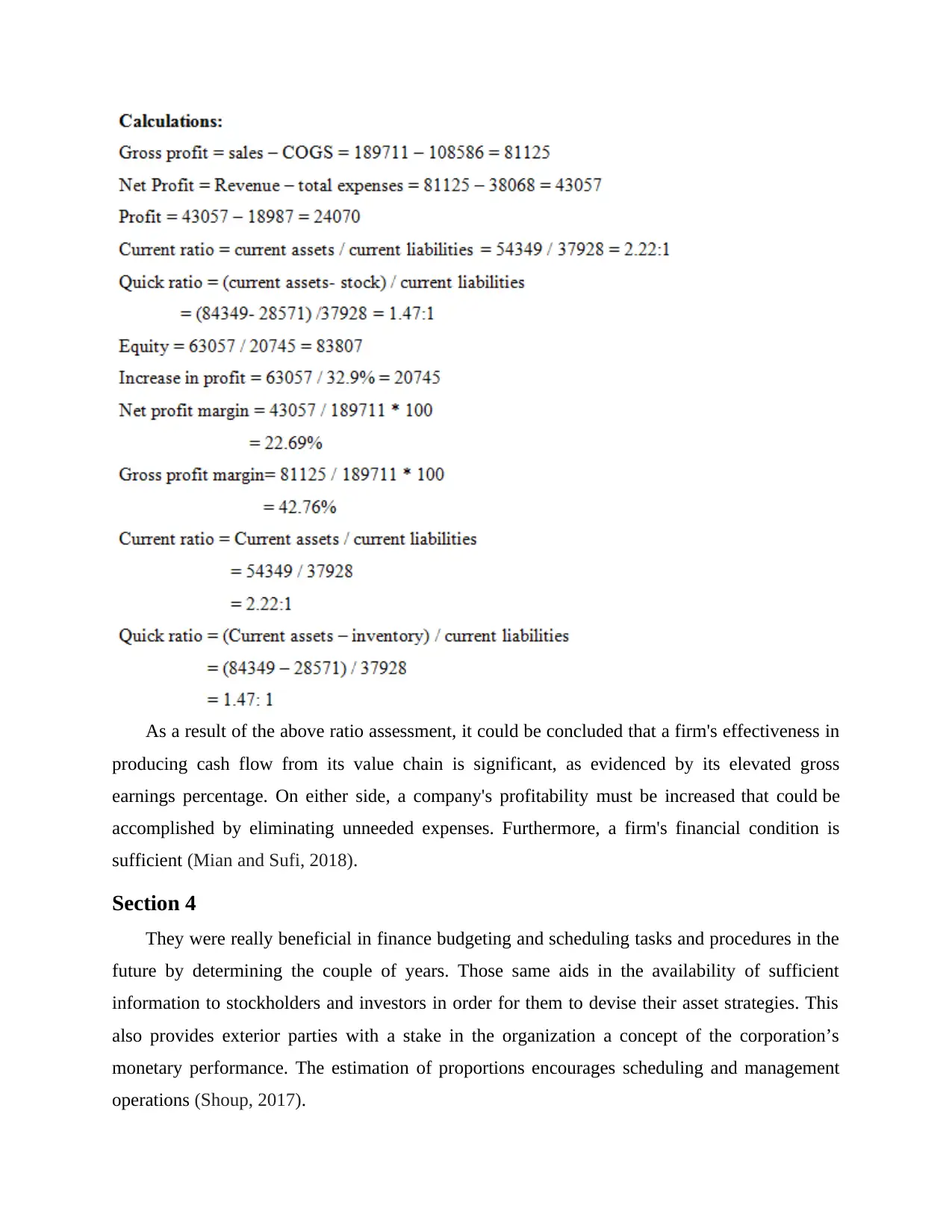
As a result of the above ratio assessment, it could be concluded that a firm's effectiveness in
producing cash flow from its value chain is significant, as evidenced by its elevated gross
earnings percentage. On either side, a company's profitability must be increased that could be
accomplished by eliminating unneeded expenses. Furthermore, a firm's financial condition is
sufficient (Mian and Sufi, 2018).
Section 4
They were really beneficial in finance budgeting and scheduling tasks and procedures in the
future by determining the couple of years. Those same aids in the availability of sufficient
information to stockholders and investors in order for them to devise their asset strategies. This
also provides exterior parties with a stake in the organization a concept of the corporation’s
monetary performance. The estimation of proportions encourages scheduling and management
operations (Shoup, 2017).
producing cash flow from its value chain is significant, as evidenced by its elevated gross
earnings percentage. On either side, a company's profitability must be increased that could be
accomplished by eliminating unneeded expenses. Furthermore, a firm's financial condition is
sufficient (Mian and Sufi, 2018).
Section 4
They were really beneficial in finance budgeting and scheduling tasks and procedures in the
future by determining the couple of years. Those same aids in the availability of sufficient
information to stockholders and investors in order for them to devise their asset strategies. This
also provides exterior parties with a stake in the organization a concept of the corporation’s
monetary performance. The estimation of proportions encourages scheduling and management
operations (Shoup, 2017).
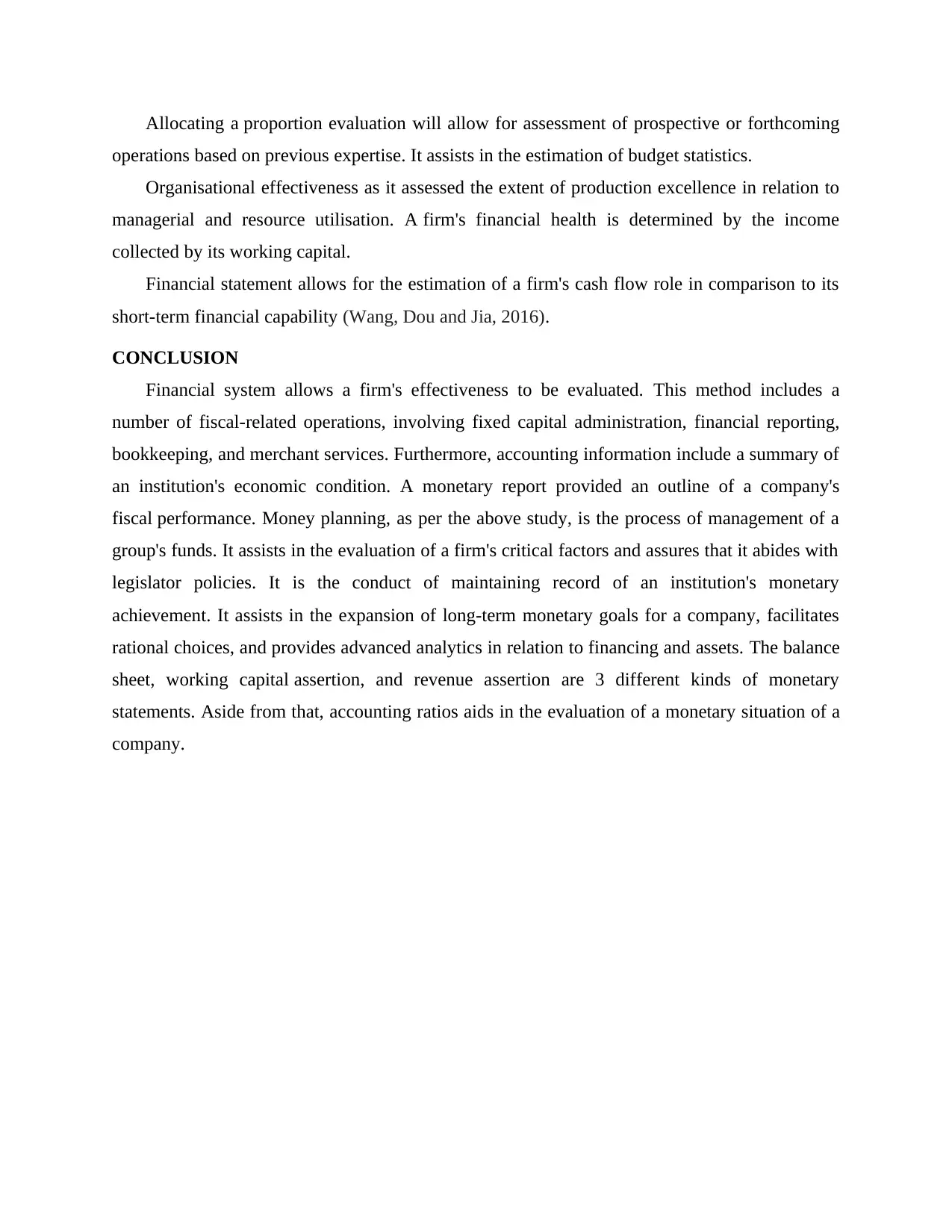
Allocating a proportion evaluation will allow for assessment of prospective or forthcoming
operations based on previous expertise. It assists in the estimation of budget statistics.
Organisational effectiveness as it assessed the extent of production excellence in relation to
managerial and resource utilisation. A firm's financial health is determined by the income
collected by its working capital.
Financial statement allows for the estimation of a firm's cash flow role in comparison to its
short-term financial capability (Wang, Dou and Jia, 2016).
CONCLUSION
Financial system allows a firm's effectiveness to be evaluated. This method includes a
number of fiscal-related operations, involving fixed capital administration, financial reporting,
bookkeeping, and merchant services. Furthermore, accounting information include a summary of
an institution's economic condition. A monetary report provided an outline of a company's
fiscal performance. Money planning, as per the above study, is the process of management of a
group's funds. It assists in the evaluation of a firm's critical factors and assures that it abides with
legislator policies. It is the conduct of maintaining record of an institution's monetary
achievement. It assists in the expansion of long-term monetary goals for a company, facilitates
rational choices, and provides advanced analytics in relation to financing and assets. The balance
sheet, working capital assertion, and revenue assertion are 3 different kinds of monetary
statements. Aside from that, accounting ratios aids in the evaluation of a monetary situation of a
company.
operations based on previous expertise. It assists in the estimation of budget statistics.
Organisational effectiveness as it assessed the extent of production excellence in relation to
managerial and resource utilisation. A firm's financial health is determined by the income
collected by its working capital.
Financial statement allows for the estimation of a firm's cash flow role in comparison to its
short-term financial capability (Wang, Dou and Jia, 2016).
CONCLUSION
Financial system allows a firm's effectiveness to be evaluated. This method includes a
number of fiscal-related operations, involving fixed capital administration, financial reporting,
bookkeeping, and merchant services. Furthermore, accounting information include a summary of
an institution's economic condition. A monetary report provided an outline of a company's
fiscal performance. Money planning, as per the above study, is the process of management of a
group's funds. It assists in the evaluation of a firm's critical factors and assures that it abides with
legislator policies. It is the conduct of maintaining record of an institution's monetary
achievement. It assists in the expansion of long-term monetary goals for a company, facilitates
rational choices, and provides advanced analytics in relation to financing and assets. The balance
sheet, working capital assertion, and revenue assertion are 3 different kinds of monetary
statements. Aside from that, accounting ratios aids in the evaluation of a monetary situation of a
company.
⊘ This is a preview!⊘
Do you want full access?
Subscribe today to unlock all pages.

Trusted by 1+ million students worldwide
1 out of 14
Related Documents
Your All-in-One AI-Powered Toolkit for Academic Success.
+13062052269
info@desklib.com
Available 24*7 on WhatsApp / Email
![[object Object]](/_next/static/media/star-bottom.7253800d.svg)
Unlock your academic potential
Copyright © 2020–2025 A2Z Services. All Rights Reserved. Developed and managed by ZUCOL.




